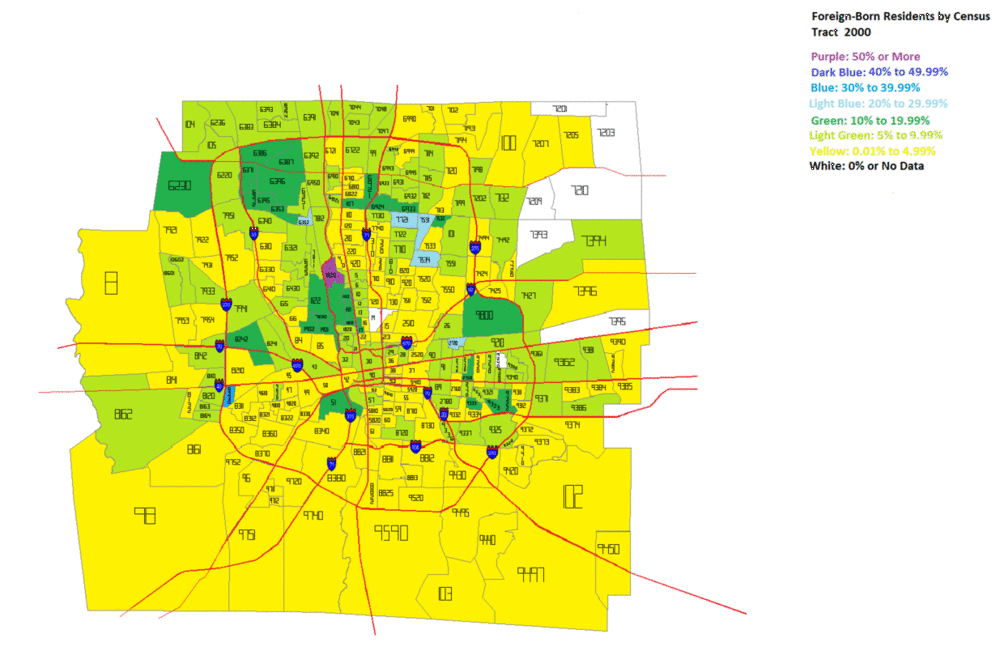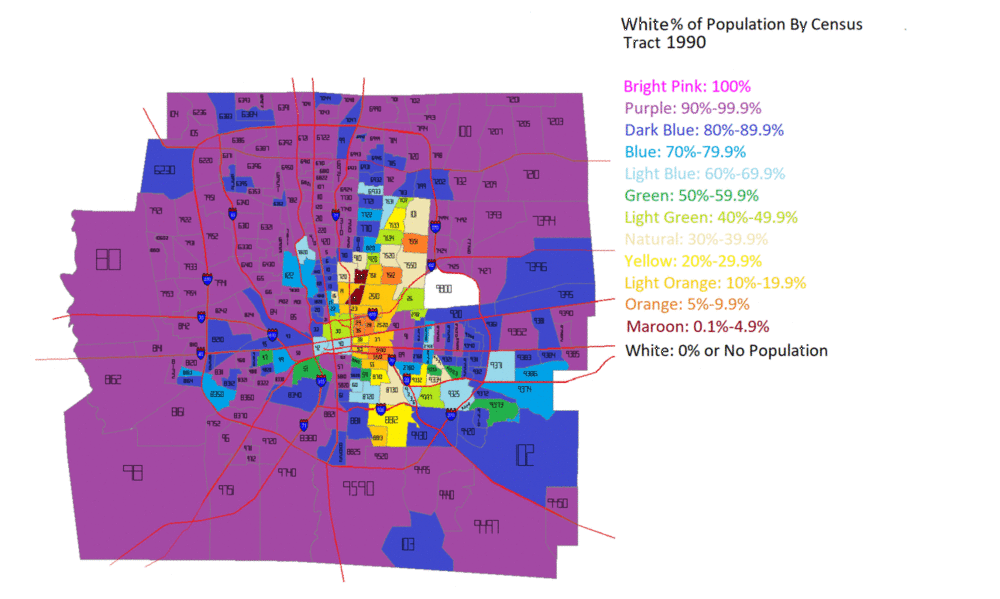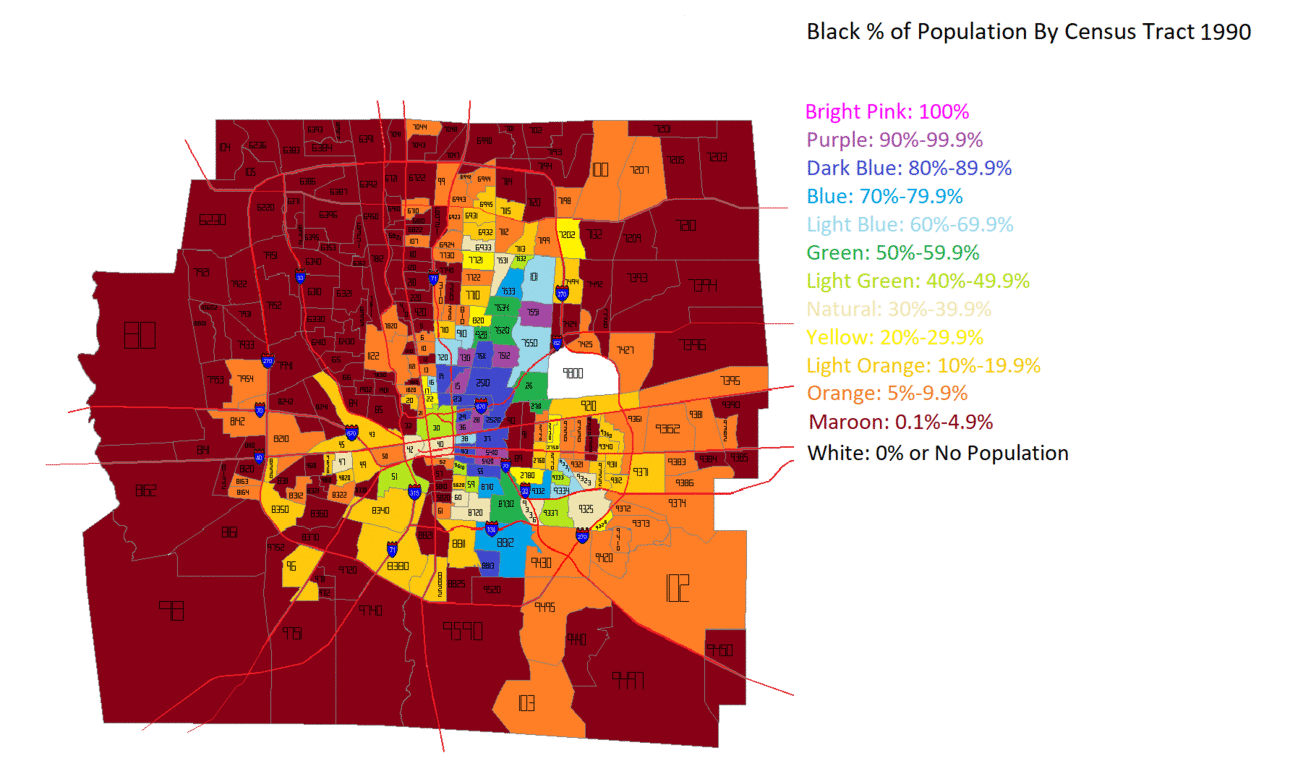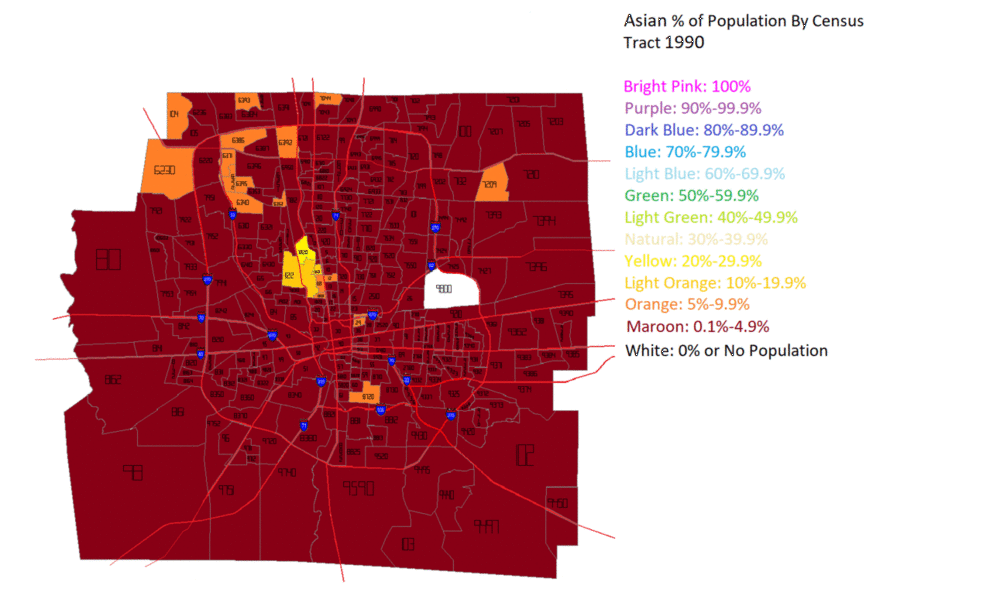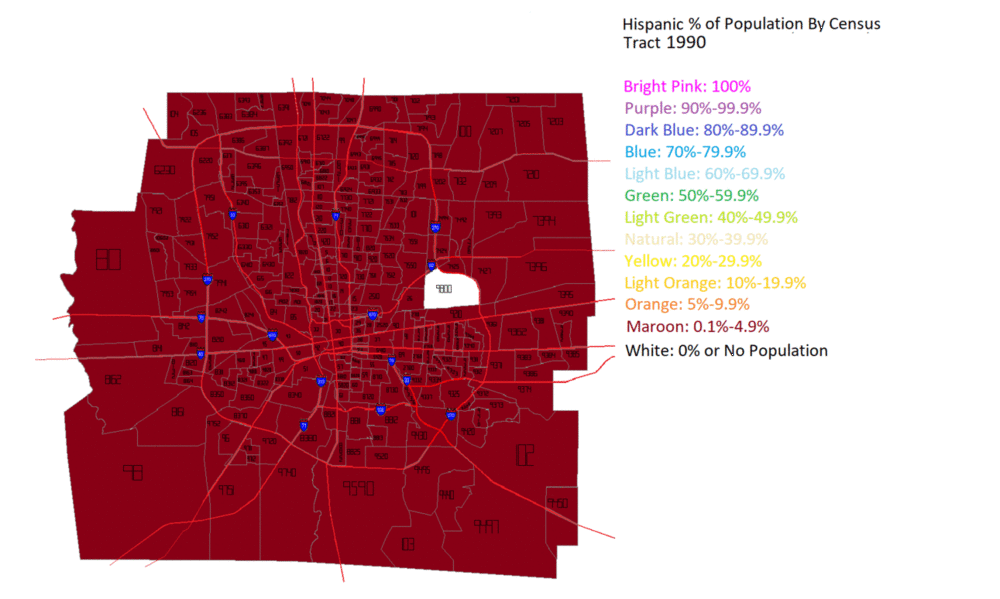Everything posted by jonoh81
-
Columbus: Scioto Peninsula Developments and News
Yeah, and they would have to significantly alter that part of the school building, I imagine. Not sure how I feel about that. My grandmother actually graduated there back in 1940.
-
Ohio Census / Population Trends & Lists
-
Ohio Census / Population Trends & Lists
-
Columbus: Random Development and News
jonoh81 replied to Summit Street's post in a topic in Central & Southeast Ohio Projects & ConstructionThe article states that all of the projects currently under construction or approved will add over 3,000 new residents to downtown. That is insane when you consider that the downtown area only had around 3,000 total residents in 2000. If we keep moving at the current rate, we should hit 15,000 downtown residents fairly soon I imagine. The latest estimate was 8,400 with at least 12,000 expected by 2020, which is about double what it was in 2010. I'm sure there will be quite a few projects proposed between now and then, so 15,000 is probably doable by 2022 or so.
-
Columbus: Victorian Village Developments and News
jonoh81 replied to Summit Street's post in a topic in Central & Southeast Ohio Projects & ConstructionThe latest I read for this is that it's up to 10 stories, at least in the latest commission notes.
-
Columbus: Scioto Peninsula Developments and News
Interesting as I haven't heard anything about that. And what do they mean by "through COSI"? It makes it sound like it will be built through the building going from the Scioto to the new park, but that doesn't sound right.
-
Ohio Census / Population Trends & Lists
30 minutes from where? First of all, I disagree that Downtown is just offices and parking. That is definitely changing, and there are growing vibrant sections on Gay, 4th and Long, as well as the RiverSouth area. Second, Downtown is literally across Goodale from the Short North. You would only be 30 minutes max if you were at the farthest point away at like Mound and 71. And you really don't have to walk. The CBus is free and circulates between Downtown up to at least 2nd Avenue. I would also question if the Downtown-urban neighborhood connections are any better in the other 2-Cs. I would say that Cleveland has the weakest connection of the 3. Its downtown has some good areas, but most of Cleveland's decent urban neighborhoods are much farther from its downtown than the Short North is from Columbus' or Cincinnati's is from OTR.
-
Ohio Census / Population Trends & Lists
I don't know about that. In Columbus, most of its popular urban neighborhoods are immediately adjacent to Downtown. People visiting, such as those going to conventions, will definitely see the Arena District and the Short North, and maybe German Village.
-
Ohio Census / Population Trends & Lists
Just did a quick calculation using the American Survey info from the Census. For the 1950 core of Columbus only, 35.3% of all buildings were built prior to 1940. That's higher than all the post-1960 period combined. The 1950s were the second biggest period, at 18.5% of all buildings, so extending the range to 1959, the total jumps to almost 68%. So more than 2/3rds of the core buildings are about 60 years old or older.
-
Columbus: Downtown Developments and News
They also chose an out-of-state developer for the Scioto Peninsula, but in that case I wish they hadn't. Their design is so painfully dull and too short. Way too safe when the local designs were actually better and had more varied height levels.
-
Ohio Census / Population Trends & Lists
Minimum, Columbus has 80 square miles of solid old urban city because that's how much was already built by 1950. I guess beyond that it just depends on what you would characterize as being suburban. Low density? Style of development? Age of development? All of the above?
-
Ohio Census / Population Trends & Lists
So if we get to just make up what MSA's we like, can I say that Columbus includes Dayton and Toledo? Cincinnati can have Indianapolis, maybe? Oh right, I forgot, you're the expert on all things Cleveland. Your quick Google Streetview and census synopsis explains everything about NE Ohio. Let Columbus take on all of Northwest Ohio, they already take up large swaths of Franklin County. It takes up less than half of Franklin County, something like 40%. And I never claimed to be an expert, just that people should stick to what they can prove, not what they believe. Adhering to your own advice would be a good start. Columbus is about 223 square miles. Franklin County is 544 square miles. That's 40.99%. It's actually a bit less than that because part of the 223 is in another county, so around 40%, as I said. Run the numbers yourself.
-
Ohio Census / Population Trends & Lists
Cleveland Heights isn't self-sustaining, there is little to no industry, which typically provides a tax base for a city. Twinsburg actually has Cleveland Heights beat in that regard. David, what is your reasoning for saying Twinsburg is not a suburb of Cleveland? If Twinsburg isn't, but Solon is, what is the distinction? You have not explained that well. I have lived several years in Cincinnati, six years in Columbus and the rest in Cleveland, so while not an expert on all things of any of the 3 Cs, I think I have some decent insight on all three. Columbus doesn't get enough credit for the development happening really all along HIgh Street North of I-71 up to Clintonville. Cleveland and Cincinnati don't really have an extended corridor that is as intact as that. Lorain Ave will probably get there eventually and maybe Detroit. Euclid Avenue could get back to that as well at some point. Old Columbus has some pretty cool neighborhoods, as well and I think when people think of Columbus' neighborhoods they think about the development that occurred 1955 on, which is sprawly, with super wide streets (161, Morse Road anyone), but really as mentioned that type of development is prevalent in every American city. My biggest issue with the whole Akron isn't Cleveland thing, is that when looking at the MSA populations around 2.1 million for Cleveland, some people act as if there is not an additional 700,000 plus people just over the Cuyahoga County line, which can't be said for any of the other two MSAs. As Florida Guy showed with his map, despite the relatively stagnant population growth that region of the state remains the biggest by a large margin and that is not even taking into account all the counties the OMB counts as Cleveland-Akron-Canton, nor the Youngstown area, all of which pushes things to 4.2 Million, but that is another story. High Street from Merion Village to Clintonville is easily Ohio's most urban corridor. There is infill development along its entire length, and it won't be long before there isn't a 1-2 story building (beyond the historic ones) or vacant lot anywhere along its stretch, at least not north of 70. Some people criticize the city for focusing so much on High, but it IS the main north-south non-highway artery and has always been the heart of the city. But there are definitely lots of urban neighborhoods and lots of development projects off of High Street. Here is the list I have: http://allcolumbusdata.com/?page_id=4618
-
Ohio Census / Population Trends & Lists
Much of this observation seems...strange. And I've also lived in Cincinnati, Dayton, and Columbus so these are a couple of little notes... 1). Clearly the old city of Columbus has character. From German Village all the way through Clintonville, that is a large swath of land with distinctive urban neighborhoods and beautiful architecture. If you actually went to Ohio State (presumably due to your screenname), you'd know how walkable/urban the University District is in Columbus. 2). Every Ohio city has cheap sprawl. Green Township to Mason is "cheap sprawl" if we're going by comparisons with Hilliard to Dublin. But as pointed out before, Columbus sprawl is quite dense (for Ohio standards) so I disagree entirely that it's "spread out." Metro Cincinnati is "spread out" from Verona to Monroe; Columbus abruptly ends as shown by that population density map above. Now if you're trying to say Metro Columbus "feels newer" than the other 2C's, that's obvious due to the continued growth rate. The contradiction of "spread out" versus "feeling smaller" is also strange as generally sprawlier metropolitan areas "feel" larger than condensed ones. Atlanta vs. Phoenix, for example...or perhaps more locally, Cincinnati vs. Columbus. Perhaps you mean that Columbus sprawl abruptly ends due to either Big Darby Creek watersheds or whatever else, thus making the metropolitan area feel smaller than the other 2C's and that would be fine point. 3). Agreed on Marysville being cornfields 30 years ago...but so was West Chester, Mason, Lebanon, and anything around Hamilton. Every metropolitan area has exurban sprawlburbs that blow up out of nowhere. Columbus has more due to the growth rate. Columbus' 1950 core, which was the peak of density in most cities, is about the same area size as Cleveland/Cincinnati's current city limits. I have never understood the claims that Columbus has a lack of urbanity in that regard. Yes, it has more newer development than Cleveland for sure, but it's actually not the most sprawled city/metro in Ohio. There was a study I read a few years back, I believe from Brookings, that had Cincinnati as having the most low-density sprawl. The entire Cin-Day argument pretty much relies on that sprawl. Columbus' urban development is compact, but its density at most levels is comparable or even greater than the other 2-Cs. Its immediate downtown is still weak, but it will more than double its population before 2020 just since 2010. A lot of the recently-announced development there continues to get taller.
-
Ohio Census / Population Trends & Lists
So if we get to just make up what MSA's we like, can I say that Columbus includes Dayton and Toledo? Cincinnati can have Indianapolis, maybe? I guess you weren’t around when God passed out common sense!!! The bottom line is that there are cities in Akron’s MSA such as Northfield, Macedonia, Twinsburg, Sagamore Hills, Aurora and others that are FACTUALLY Cleveland suburbs. Akron is only 39 miles from Downtown Cleveland in the next county. So for you to suggest that Columbus/Dayton (75 miles) Columbus/Toledo (140 miles) and Cincy/Indy (100 miles) would be in the same boat as Cleveland/Akron shows a level of incompentence and cluelessness that I’ve rarely seen!!! Furthermore, what you fail to realize these govt definitions are very political. The reason that Cleveland and Akron are not in the same MSA Is because Akron officials don’t want to be part of the Cleveland MSA, pure and simple. It has very little to do commuting patterns or any other metric. The fact of the matter is that Cleveland and Akron are in the same metropolitan area, and is by far the largest in Ohio. You guys do know I was being sarcastic, right? And no, they are not in the same metro. The only organization that sets those is the Census, not people on an internet forum.
-
Ohio Census / Population Trends & Lists
So if we get to just make up what MSA's we like, can I say that Columbus includes Dayton and Toledo? Cincinnati can have Indianapolis, maybe? Oh right, I forgot, you're the expert on all things Cleveland. Your quick Google Streetview and census synopsis explains everything about NE Ohio. Let Columbus take on all of Northwest Ohio, they already take up large swaths of Franklin County. It takes up less than half of Franklin County, something like 40%. And I never claimed to be an expert, just that people should stick to what they can prove, not what they believe.
-
Ohio Census / Population Trends & Lists
So if we get to just make up what MSA's we like, can I say that Columbus includes Dayton and Toledo? Cincinnati can have Indianapolis, maybe? Sure...go ahead...but it doesn't make it correct: https://www.newsgeneration.com/broadcast-resources/top-100-radio-markets/ Media is actually divided into DMAs (Designated Market Areas) which are different geographically than MSAs. For example, Logan and Bucyrus are in the Columbus DMA but not its MSA. I know this. Just saying that putting Cleveland/Akron/Canton together makes sense as compared to what others have suggested. It might make sense to you, but it's not reality. Just like Dayton isn't part of Cincinnati no matter how many people think it is. Now, maybe they one day will be, but they're not in the present. I just wish people could stick to the actual facts on things. It would save so much argument.
-
Ohio Census / Population Trends & Lists
So if we get to just make up what MSA's we like, can I say that Columbus includes Dayton and Toledo? Cincinnati can have Indianapolis, maybe? Sure...go ahead...but it doesn't make it correct: https://www.newsgeneration.com/broadcast-resources/top-100-radio-markets/ Neither does saying Akron is part of the Cleveland MSA. Nor are radio markets MSAs. So it's what I said, we get to make up what we want. Facts aren't important, it's what we believe. America 2018.
-
Ohio Census / Population Trends & Lists
So if we get to just make up what MSA's we like, can I say that Columbus includes Dayton and Toledo? Cincinnati can have Indianapolis, maybe?
-
Cleveland: Population Trends
Does the Brookings study use Census data? If not, it's not actually a direct comparison from the 2011 to 2016 numbers.
-
Cincinnati: General Business & Economic News
I remember a few years ago reading articles about how Columbus was promoting itself with actual advertisements in other cities. Does Cincinnati do anything like that?
-
Cincinnati: General Business & Economic News
That's good news but Amazon could still say, "Well, you don't have it already." Seattle had terrible transit for many years and ridership was steadily declining until Amazon became such a big influence. If transit was so important, Columbus, Indy, Raleigh and others never would've made top 20.
-
Cincinnati: General Business & Economic News
Every type of tax is higher in Columbus, yet it is growing faster. And let's be honest, even with some higher taxes cost of living there is still comparable across the 3Cs.
-
Ohio: General Business & Economic News
There are even 3 locations within the DC metro on the short list. Plus Bezos other business is in DC. I think that is very telling. I'm not so sure. Cost of living and limited space are going to eliminate some of the bigger metros I think
-
Ohio: General Business & Economic News
Not because Amazon cares about making an impact for people, rather such places are more willing to sell their shirts for them, building new roads, schools, etc. Yes, that's what I mean. Smaller metros would roll over more. That said, larger metros would be capable of larger incentives.




